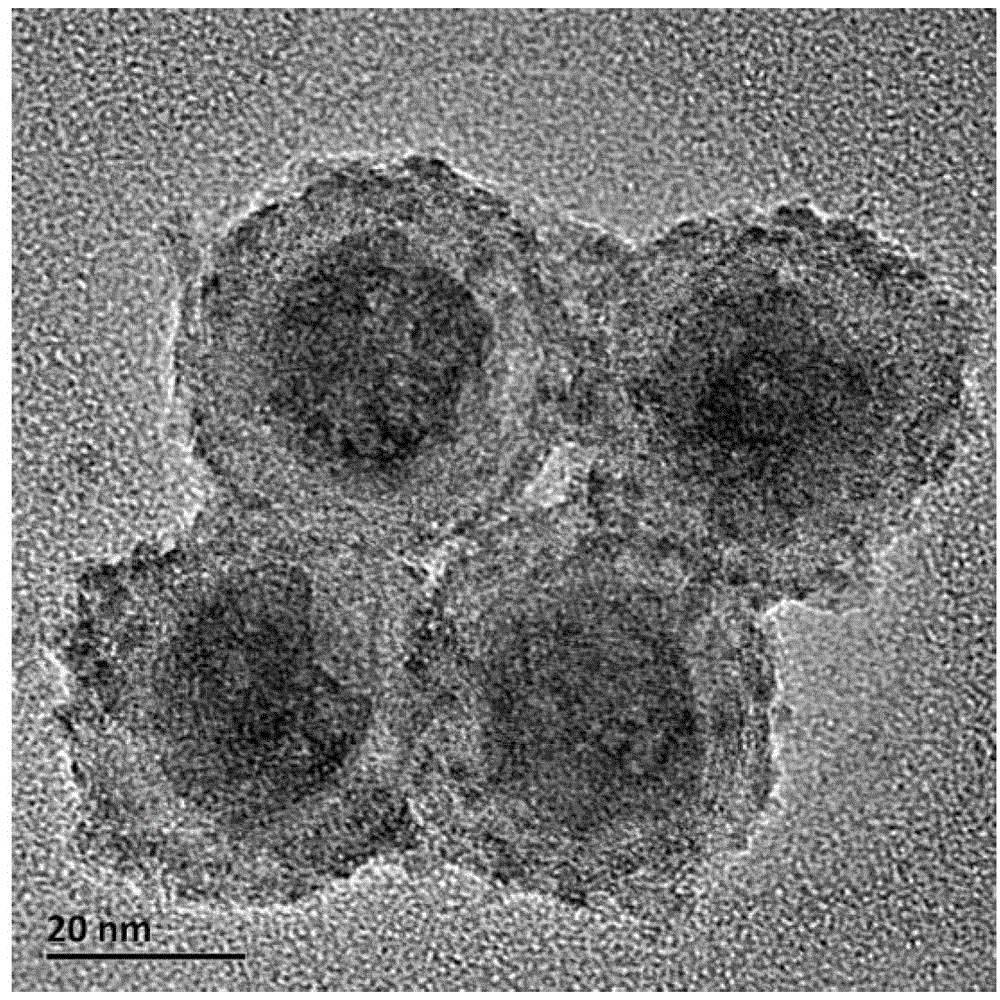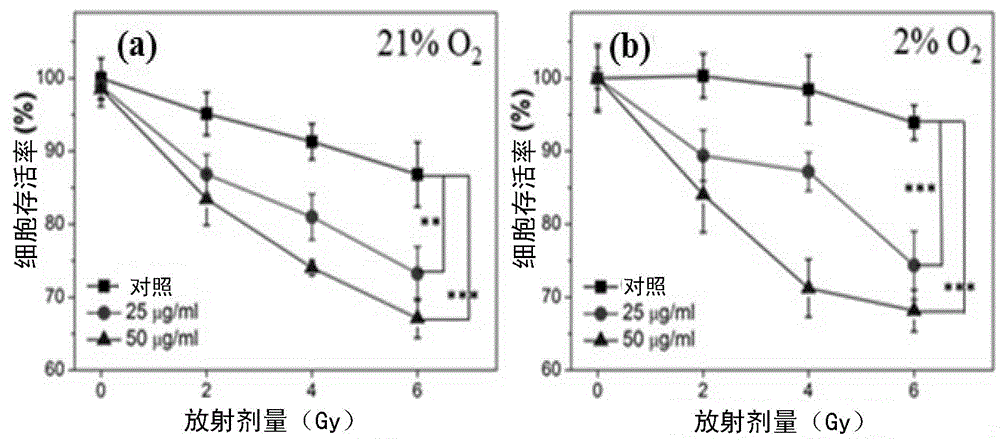Low-oxygen dependent X-photodynamic nano photosensitizer as well as preparation method and application thereof
A photodynamic and dependent technology, applied in the field of biomedical nanomaterials, can solve the problems of high tissue oxygen partial pressure dependence, shallow penetration depth of excitation light source, and low penetration depth of excitation light source, so as to reduce tissue oxygen dependence. The effect of stability, unlimited penetration depth, and easy synthesis process
- Summary
- Abstract
- Description
- Claims
- Application Information
AI Technical Summary
Problems solved by technology
Method used
Image
Examples
preparation example Construction
[0057] The preparation method of the above-mentioned nano-photosensitizer may include: synthesizing the inner core of the nano-scintillation crystal, wrapping a silicon dioxide layer on the surface of the inner core, modifying the mercapto group on the silicon dioxide layer, covalently bonding the mercapto group on the silicon dioxide layer through the coordination between the mercapto group and the metal. The surface of the layer is adsorbed with ultra-small zinc oxide nanoparticles, and the outermost layer is modified with polyethylene glycol. Specifically, with LiYF 4 : Ce 3+ SiO 2 ZnO-PEG is taken as an example, which can be prepared by the following steps.
[0058] First, prepare LiYF 4 : Ce 3+ Nano-scintillation crystal core. It can be prepared by high-temperature pyrolysis of oleate, and the process may include the following operations:
[0059] 1-a) adding the precursor solution of rare earth ions into the mixed solution of octadecene and oleic acid, fully stirri...
Embodiment 1
[0092] Weigh 1.94mmol YCl 3 ·6H 2 O (588.5 mg) and 0.06 mmol CeCl 3 ·6H 2 O (22.4mg), dissolve with 2ml deionized water; Add 15ml oleic acid and 30ml octadecene in the there-necked flask of 100ml, add the rare earth ion precursor solution of preparation dropwise under stirring condition; Under argon protection condition, Raise the temperature of the system and keep it at 160°C for 1 hour; after ensuring that the water in the system is completely removed, stop heating and let it cool down to room temperature naturally to obtain a yellow clear solution; weigh 3mmolLiOH·H 2 O (125.9 mg) and 8 mmol NH 4 F (293.6mg), add 10ml of methanol and 2ml of acetic acid, ultrasonically dissolve, and add dropwise to the reaction system, stir at room temperature for 2h; heat up under the protection of argon, keep it at 120°C for 1h, and remove the Methanol and acetic acid; add a condensing reflux tube, raise the temperature of the system to 280°C and keep it warm for 1.5h to carry out the ...
Embodiment 2
[0146] Weigh 1.94mmol YCl 3 ·6H 2 O (588.5 mg) and 0.1 mmol CeCl 3 ·6H 2 O (37.3mg), dissolve with 2ml deionized water; Add 20ml oleic acid and 20ml octadecene in the there-necked flask of 100ml, add the rare earth ion precursor solution of preparation dropwise under stirring condition; Under argon protection condition, Raise the temperature of the system and keep it at 160°C for 1 hour; after ensuring that the water in the system is completely removed, stop heating and let it cool down to room temperature naturally to obtain a yellow clear solution; weigh 3 mmol LiOH·H 2 O (125.9 mg) and 8 mmol NH 4 F (293.6mg), add 10ml of methanol and 2ml of acetic acid, ultrasonically dissolve, and add dropwise to the reaction system, stir at room temperature for 2h; heat up under the protection of argon, keep it at 120°C for 1h, and remove the Methanol and acetic acid; add a condensing reflux tube, raise the temperature of the system to 280°C and keep it warm for 1.5h to carry out the...
PUM
| Property | Measurement | Unit |
|---|---|---|
| particle diameter | aaaaa | aaaaa |
| diameter | aaaaa | aaaaa |
| thickness | aaaaa | aaaaa |
Abstract
Description
Claims
Application Information
 Login to View More
Login to View More - R&D
- Intellectual Property
- Life Sciences
- Materials
- Tech Scout
- Unparalleled Data Quality
- Higher Quality Content
- 60% Fewer Hallucinations
Browse by: Latest US Patents, China's latest patents, Technical Efficacy Thesaurus, Application Domain, Technology Topic, Popular Technical Reports.
© 2025 PatSnap. All rights reserved.Legal|Privacy policy|Modern Slavery Act Transparency Statement|Sitemap|About US| Contact US: help@patsnap.com



